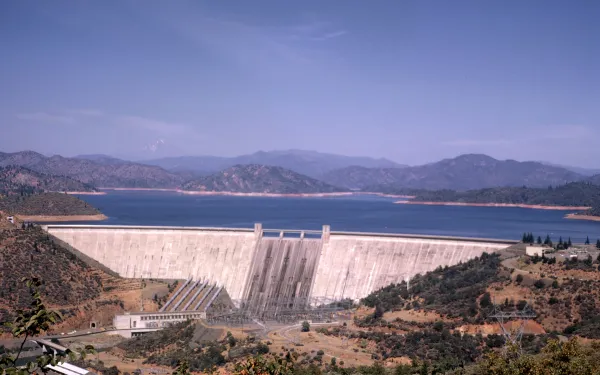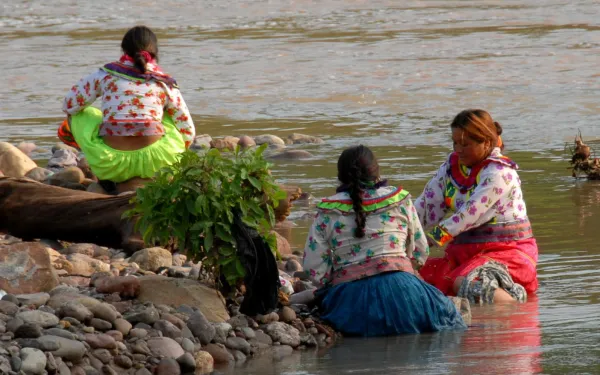AIDA Presents Report on Large Dams Before the Inter-American Development Bank (Spanish)
Para Publicación Inmediata: 19 de Marzo de 2010 Contacto: Astrid Puentes Riaño - AIDA, +(52-1-55) 23016639, [email protected] Informe: Grandes Represas en América ¿Peor el remedio que la enfermedad? AIDA PRESENTA DOCUMENTO ANTE EL BID El objetivo del documento es el de promover un mejor entendimiento de la situación, evidenciar la vinculación entre los graves impactos ambientales y la violación a los derechos humanos que las grandes represas pueden causar. Cancún, México – La Asociación Interamericana para la Defensa del Ambiente, AIDA, presentará el informe: “Grandes Represas en América, ¿Peor el remedio que la enfermedad?” ante el Banco Interamericano de Desarrollo, BID. La presentación se hará en el marco de la Reunión Anual de Gobernadores del BID que se celebra en Cancún, hasta el 23 de marzo. En esta reunión, entre otros, el BID decidirá acerca de la recapitalización del Banco para promover mayores inversiones en el hemisferio. “Esperamos que las futuras inversiones financiadas por el BID y otras Instituciones Financieras Internacionales tengan en cuenta este informe, así como los estándares internacionales para estos proyectos, incluyendo las recomendaciones de la Comisión Mundial de Represas” declaró Astrid Puentes, co-directora de AIDA. “Esto podría Así podrían evitar graves impactos ambientales y a los derechos humanos, y promover verdaderos proyectos de energía limpia”. El objetivo del Informe es evidenciar la vinculación entre los graves impactos ambientales y la violación a los derechos humanos que las grandes represas pueden causar y motivar la implementación de proyectos de energía adecuados. Para ello, se analizan cinco estudios de caso de distintas regiones de América Latina: La Parota (México), Chan 75 (Centroamérica), Baba (región Andina), Río Madeira (Brasil) y Yacyretá (Cono Sur). El informe preparado por AIDA en coordinación con International Rivers y con la cooperación de múltiples organizaciones no gubernamentales y de comunidades afectadas por las grandes represas en el hemisferio, se presentó también en noviembre pasado ante la Comisión Interamericana de Derechos Humanos (CIDH) en Washington. La CIDH celebró esta audiencia dada la importancia del tema para la adecuada protección de los derechos humanos en la región. Entre los impactos más graves generados por las grandes represas, abordados en el Informe, se incluyen: el empeoramiento de la calidad y salubridad de las aguas tanto río arriba como río abajo por la modificación artificial de las cuencas hidrográficas; la degradación de ecosistemas acuáticos; los impactos a la biodiversidad; los impactos en el cambio climático por el aumento en la emisión de gases efecto invernadero dada la descomposición de materia orgánica inundada; el posible aumento de actividad sísmica; la destrucción de ecosistemas estratégicos; el desplazamiento forzado de comunidades típicamente en situación de vulnerabilidad, como las indígenas, campesinas y afrodescendientes, así como las mujeres y los niños y las niñas; la pérdida de fuentes de alimentación y de sustento; la falta de participación pública y acceso a la información; la falta de consulta y la obtención del consentimiento libre, previo e informado de comunidades afectadas; y criminalización de la protesta social hacia personas o comunidades que defienden sus derechos. “Buscamos evitar estas consecuencias negativas y promover alternativas efectivas a las necesidades energéticas, para lograr un verdadero desarrollo sostenible”, puntualizó Jacob Kopas, abogado de AIDA y coautor del Informe. Versión completa del informe y Resumen Ejecutivo Para mayor información acerca de la situación de las grandes represas en América Latina visite: www.aida-americas.org www.internationalrivers.org www.redlar.org/
Read more


